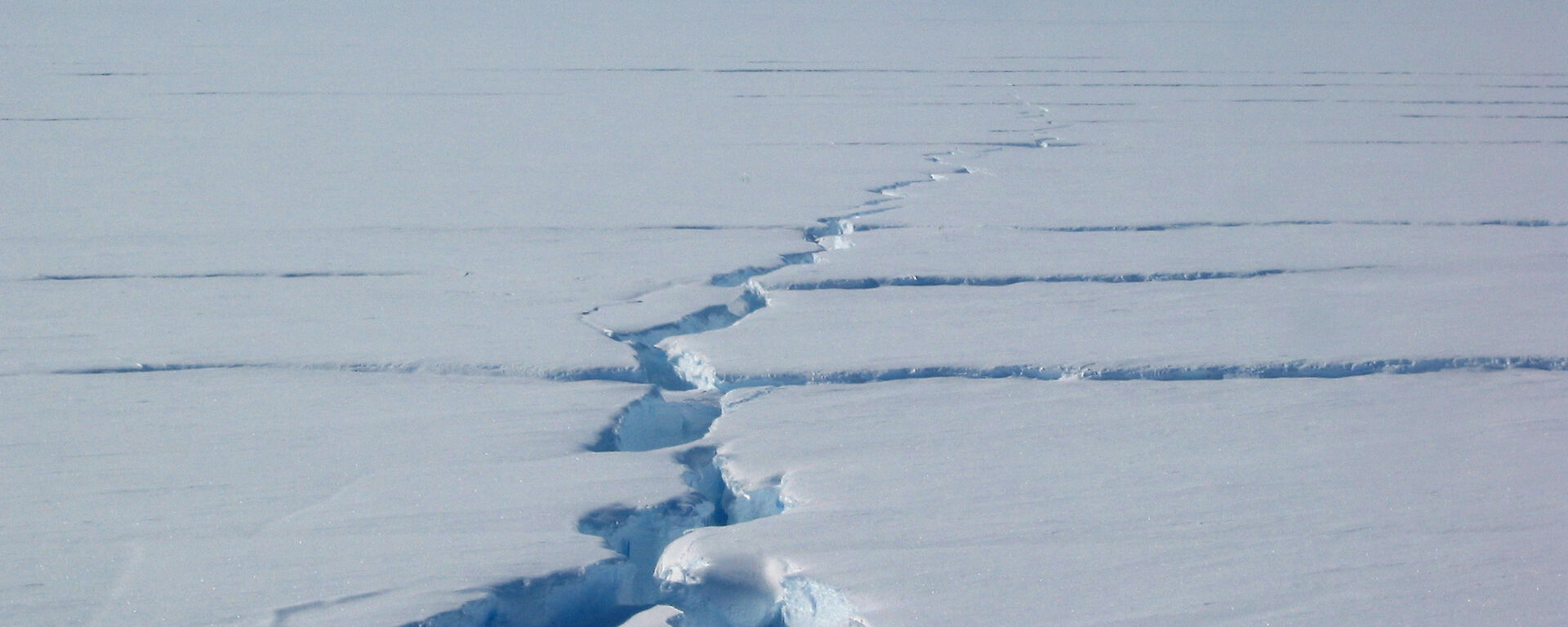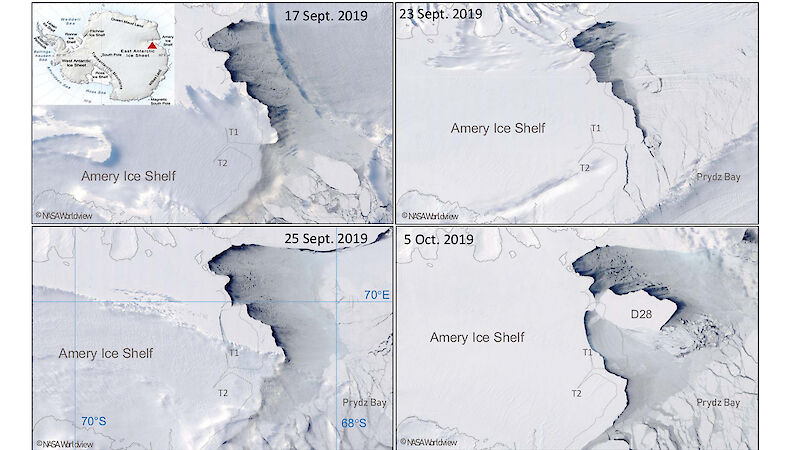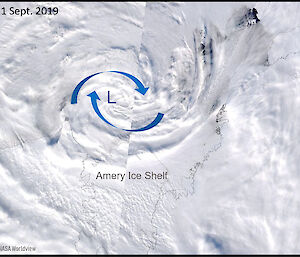The finding comes after an international team of scientists, including Australian Antarctic Division physical scientist Dr Petra Heil, investigated the calving of a 1636 square kilometre, 210 metre-thick iceberg off the Amery Ice Shelf in East Antarctica.
The calving on 25 September 2019 occurred almost a decade earlier than scientists had expected (based on historical observations), from an existing rift across the front of the ice shelf.
Two explosive cyclone events just prior to the calving, were caused by unusual atmospheric conditions that fuelled sustained cyclones at the front of the ice shelf, and helped direct moist, warm air towards the ice shelf at the same time.
Dr Heil said these high latitude cyclones form in the extra-tropics, or mid-latitudes, and deepen as they move towards Antarctica.
They are marked by a deep central air pressure, are longer-lasting than ordinary cyclones, and bring clouds, high winds and often heavy precipitation.
“They form when the central pressure decreases by at least 24 hPa in 24 hours and they are stronger in the Indian Ocean sector of the Southern Ocean – near the Amery Ice Shelf – than elsewhere around Antarctica,” Dr Heil said.
“They are also more intense in the Southern Hemisphere than in the Northern Hemisphere.”
The team used satellite data and climate reanalysis (using models to analyse historical atmospheric observations) to understand the unusual atmospheric conditions at the time of the calving. They also looked at sea-ice conditions and ice movement over the Amery Ice Shelf.
Lead author of the study, Dr Diana Francis of Khalifa University in the United Arab Emirates, said they found an explosive cyclone formed over Cooperation Sea, to the west of the ice shelf, on 18 September 2019, generating surface winds of more than 72 km/h.
This was followed immediately by a second explosive cyclone on 19 September, which evolved into twin cyclones that remained stationary over the same region.
The event caused wind and wave stress over the front of the ice shelf and the poleward movement of warm, moist air.
A similar explosive cyclone–twin cyclone event in front of the ice shelf occurred again between 21 and 24 September, but with winds coming from the opposite direction that pushed a protective buffer of sea ice up to 65 km away from the shelf-front. The winds also caused offshore tilting of the sea surface, away from the ice-shelf front, leading to calving along the pre-existing rift.
“Twin cyclones are mutually interacting and twice as strong as individual cyclones,” Dr Francis said.
“While twin cyclones are usually observed in the tropics, to our knowledge this is the first report of polar twin cyclones near Antarctica.
“Our results suggest that the first cyclonic event preconditioned the ice shelf front for breakoff, while the offshore winds during the second event triggered the calving, by clearing the protective band of sea ice and creating an ocean-ward sea surface slope, tearing the iceberg-to-be away from the shelf.”
Ice shelves act to buttress inland ice by blocking the flow of ice from the interior. While calving ice shelves don’t result in sea level rise, as they are already floating, the loss of ice shelves accelerates the rate of flow from the grounded Antarctic ice sheet – inland of the ice shelf – into the ocean.
“Our results demonstrate that atmospheric extreme events need to be accounted for in ice sheet models when considering Antarctic ice shelf variability and their contribution to sea level, especially given that more of these extremes are predicted under a warming climate,” Dr Heil said.
The research was published in The Cryosphere last week.




